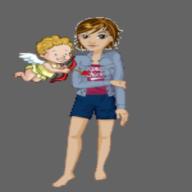Tortoises are amphibians?
2006-11-19 5:43 am
Tortoises are amphibians?
回答 (3)
2006-11-19 5:57 am
✔ 最佳答案
Tortoises are reptilesTortoise
From Wikipedia, the free encyclopedia
Jump to: navigation, search
This article or section is in need of attention from an expert on the subject.
Please help recruit one, or improve this page yourself if you can. See discussion page for details.
For other uses, see Tortoise (disambiguation).
?Tortoises
圖片參考:http://upload.wikimedia.org/wikipedia/en/thumb/4/41/Tortoise.aldabra.750pix.jpg/250px-Tortoise.aldabra.750pix.jpg
Aldabra Giant Tortoise
(Geochelone gigantea)
from Aldabra atoll in the Seychelles.
Scientific classification
Kingdom:
Animalia
Phylum:
Chordata
Class:
Reptilia
Order:
Testudines
Suborder:
Cryptodira
Superfamily:
Testudinoidea
Family:
Testudinidae
Genera
Chersina
Dipsochelys
Furculachelys
Geochelone
Gopherus
Homopus
Indotestudo
Kinixys
Malacochersus
Manouria
Psammobates
Pyxis
Testudo
A tortoise is a land-dwelling reptile of the order Testudines.
Contents[hide]
1 Description
2 Lifespan
3 Partial species list
4 Further reading
5 See also
6 External links
7 Gallery
[edit] Description
Like its aquatic cousins, the turtle and the terrapin, the tortoise is shielded from predators by a shell. The top part of the shell is the carapace, the underside is the plastron, and the two are connected by the bridge. The tortoise has both an endoskeleton and an exoskeleton. Tortoises can vary in size from a few centimetres to two meters. Most land tortoises are herbivorous in the wild. The carapace can help indicate the age of the tortoise by the number of concentric rings, much like the cross-section of a tree. Males tend to have a longer, protruding neck plate than their female counterparts.
Tortoises tend to be diurnal animals with tendencies to be crepuscular depending on the ambient temperatures. They are generally reclusive and shy.
Most land based tortoises are herbivores, feeding on grazing grasses, weeds, leafy greens, flowers, and certain fruits. Their main diet consists of alfalfa, clover, dandelions, and leafy weeds.
Female tortoises dig and lay about a dozen eggs in burrows or holes they dig. Hatchlings take approximately 90-120 days to incubate from ping-pong-ball sized eggs. The hatchlings break out of their shells with a front beak. Most hatchlings are born with an embryonic egg sac, serving as a source of food for the first couple of days. They are capable of eating solid food in about 3-7 days.
The giant tortoises of the Galápagos Islands helped Charles Darwin formulate his theory of evolution, since the isolated populations on the different islands, although descended from a common ancestor, had diverged to different forms.
The first turtles already existed in the era of the dinosaurs, some 300 million years ago. Turtles and tortoises are the only surviving branch of the even more ancient clade Anapsida, which includes groups such as the procolophonoids, millerettids and pareiasaurs. Most of the anapsids became extinct in the late Permian period, with the exception of the procolophonoids and the precursors of the testudines (turtles and tortoises).
While the Oxford English Dictionary refers to a tortoise as a "slow-moving land reptile with a scaly or leathery domed shell into which it can retract its head and legs" [1], in American English it is not uncommon for such animals to be referred to as turtle.
2006-11-21 6:30 am
tortoises are reptiles, but are mistaken as amphibians.
2006-11-19 5:46 am
yes.they are!
收錄日期: 2021-04-12 22:59:10
原文連結 [永久失效]:
https://hk.answers.yahoo.com/question/index?qid=20061118000051KK05326


